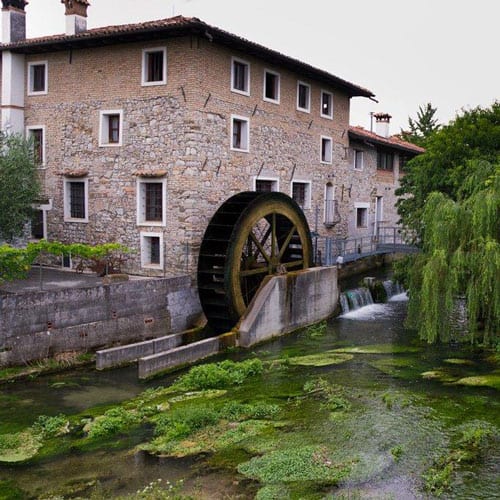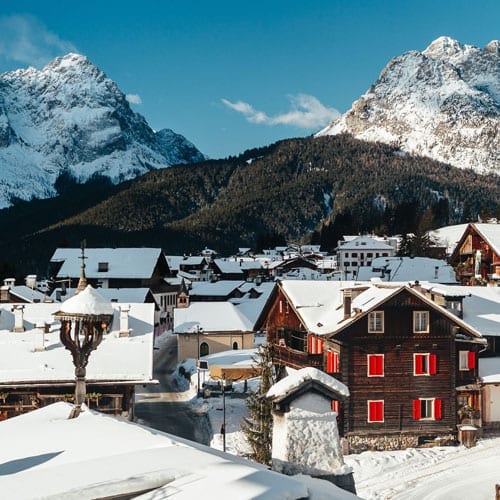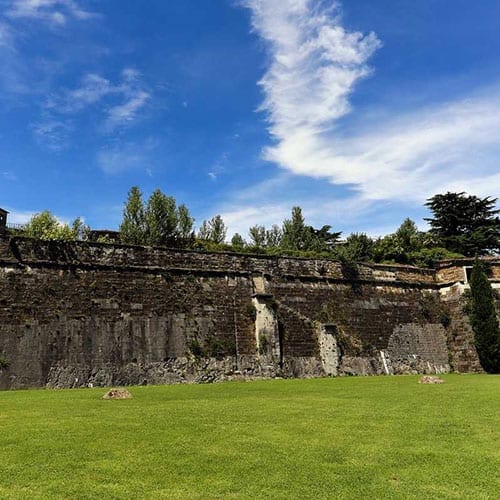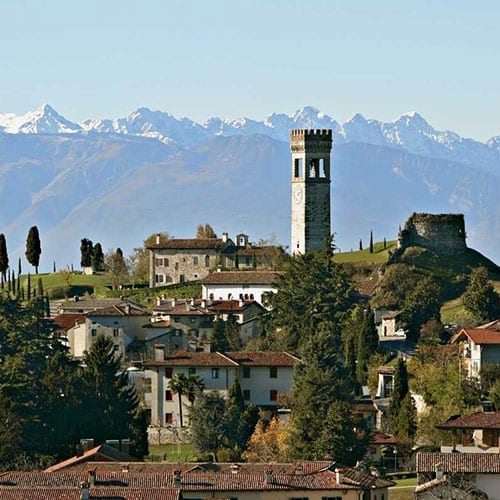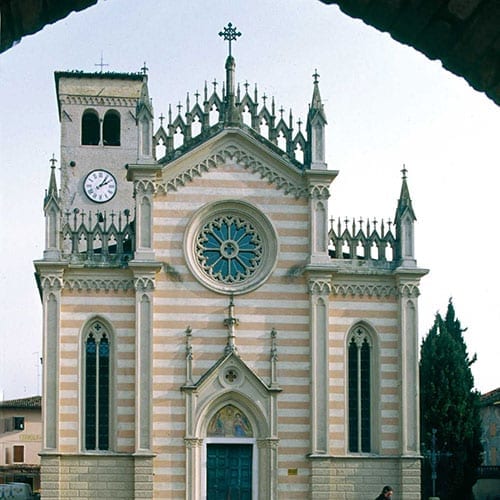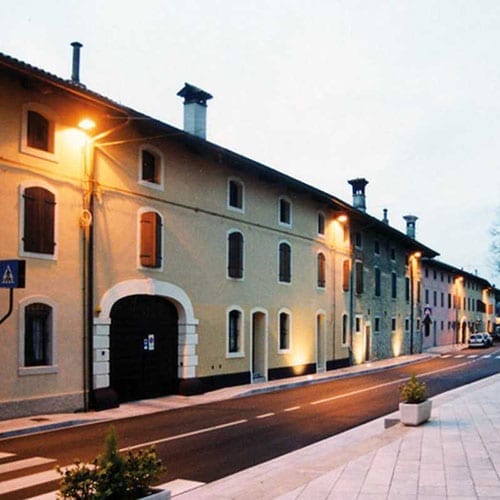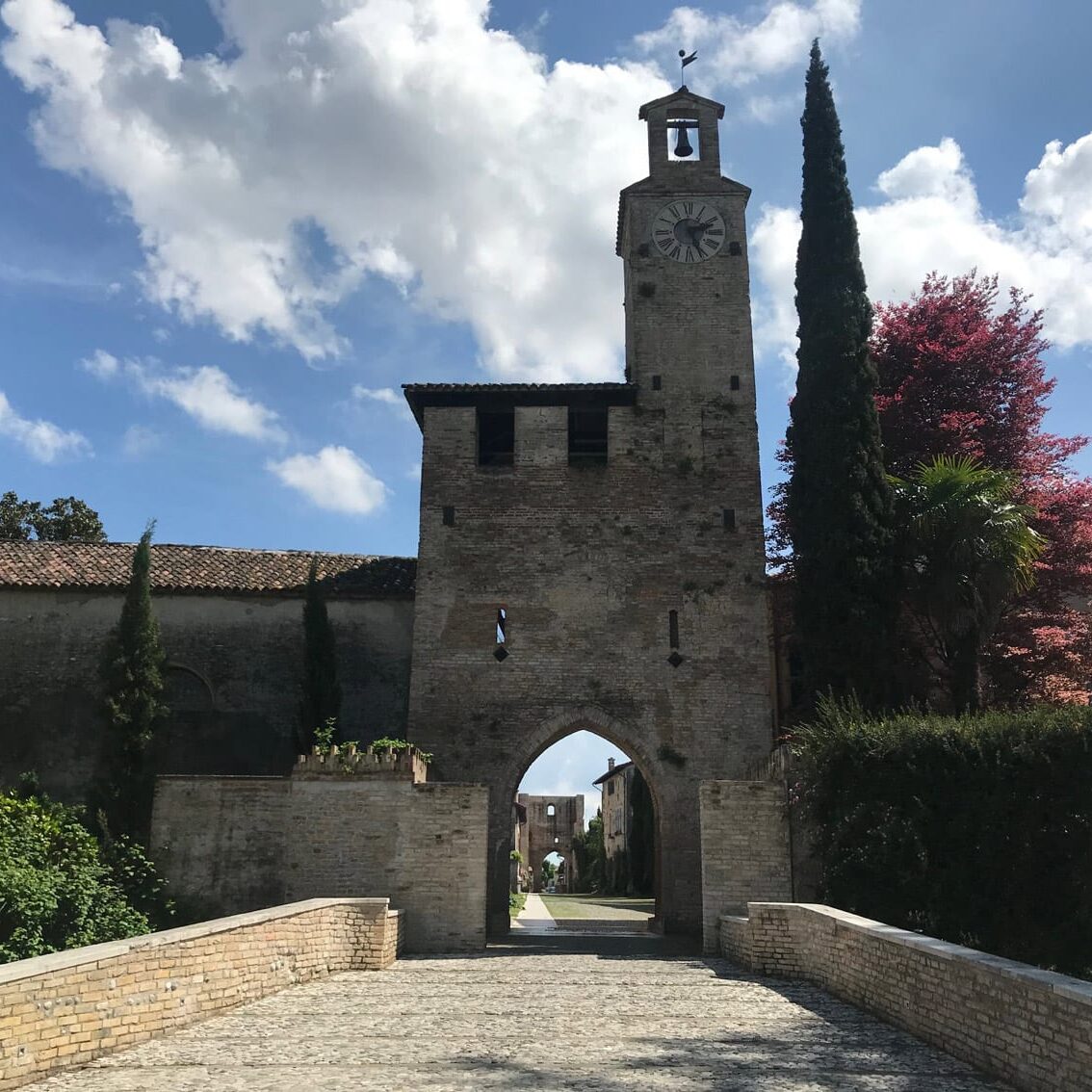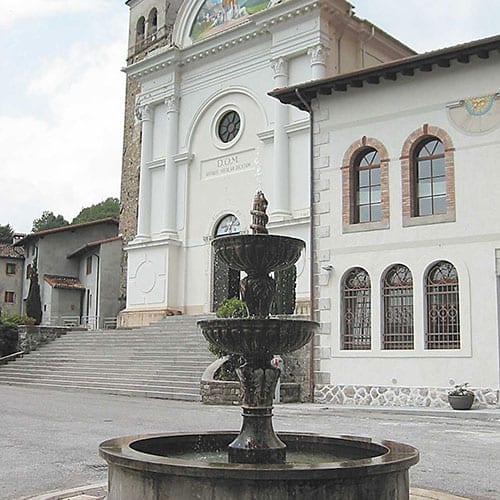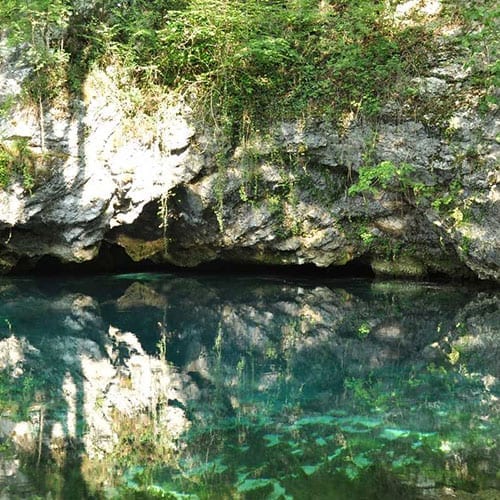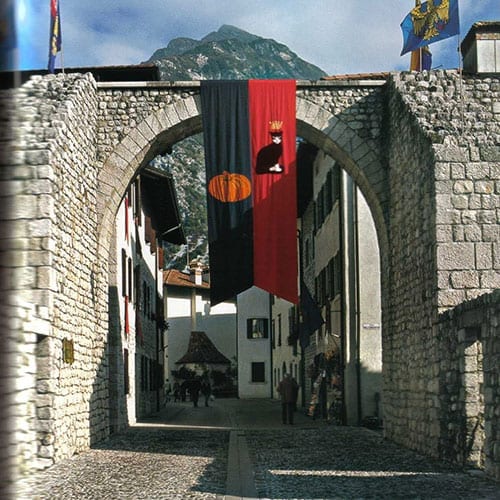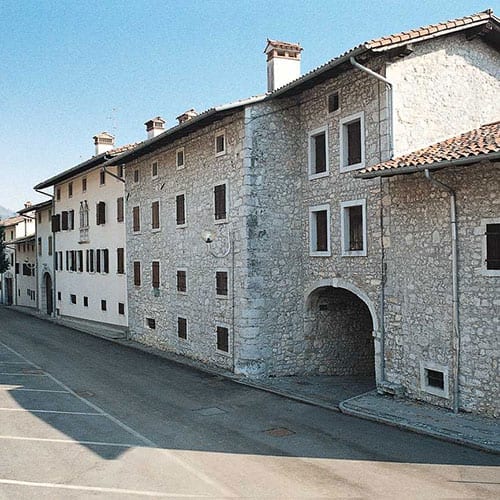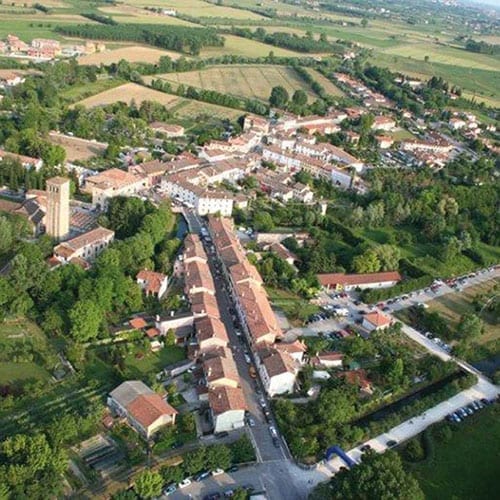Palmanova
MUNICIPALITY OF PALMaNOVA
(Province of Udine)
Altitude
mt. 27 a.s.l.
POPULATION
5419
tourist information
Infopoint Palmanova – Promoturismo FVG
Borgo Udine, 4
33057 Palmanova
Ph. +39 0432 924815
info.palmanova@promoturismo.fvg.it
www.turismofvg.it/Palmanova
www.comune.palmanova.ud.it
 The name
The name
The name Palma, as it was initially called Palmanova, was chosen in 1593 by Marc’Antonio Barbaro, the first general superintendent of the Fortress. Various hypotheses led to the choice. One referring to the palm tree that has always been a symbol of victory and glory (Palma must have been the bulwark of Christianity against the Turks). Another hypothesis leads back to a name borrowed from the old village of Palmada (village located near the fortress). In the 19th century the village took its present name, Palmanova.
A nine-pointed star-shaped city: the starry city. Palmanova is one of the most successful and unique masterpieces of Venetian military architecture with its starred plan, formed by two defensive orders of ramparts and ravelins and the third, the external one with the lunettes, added by Napoleon at the beginning of the nineteenth century. The symmetrical arrangement of the architectural modules of the fortifications together with the radial urban layout with the majestic Piazza d’Armi in the centre, the core of the fortress, make the city perfectly suited to the characteristics of an ideal city theorised in the context of Renaissance culture. In 1960 the fortress was declared a National Monument and on July 9, 2017 it became a UNESCO World Heritage Site, confirming the values of uniqueness and integrity of the complex.
Palmanova represents one of the most successful models of “ideal fortress city” actually built: a real jewel for architecture, military – but not only – lovers. Its star shape, with nine identical points, is in fact a hymn to urban perfection and symmetry. Two defensive lines were built, consisting of embankments supported by stones and bricks. The structure, designed and then built with great engineering skills, consisted of bulwarks (or bastions), curtains, falsebrakes and ravelins. Among these there is a moat and a network of underground tunnels that allowed the troops to move between the various lines.
The access to the city through the three gates was also designed to allow the visitor, after crossing the walls circle, to immediately enjoy a deep glimpse: with a single glance you can in fact directly reach the heart of Palmanova, Piazza Grande. This space is also a special and ideal privileged observatory: the point of arrival of any path starting from the gates, its regular hexagon shape could not better represent the idea of design perfection at the base of the entire fortress-city.
The main monuments of the Borgo overlook Piazza Grande:
-the Doge’s Cathedral, with its baroque façade, is one of the most illustrious examples of Venetian architecture in Friuli Venezia Giulia;
-the Palazzo del Provveditore Generale (1598-1611), another symbol of civil power, now the Town Hall;
-the Loggia della Gran Guardia, which housed the guardhouse to protect the superintendent;
-the Merchants’ Lodge;
-the Palazzo del Monte di Pietà, built in 1666 to help the most needy population
The ramparts and the system of tunnels are of great historical and artistic interest: two defensive lines with ramparts and ravelins and within them all the city. A third wall was added in the Napoleonic era. A system of underground tunnels (some of which can be visited) was built to move the troops and to defend the fortress.
Finally, it is worth visiting the Museum of the Great War and the Fortress of Palmanova, above Porta Cividale, to discover the military history of the Fortress from its foundation to present day.
“A.D. Palma alle Armi” (first weekend of September): The Italian historical re-enactment with the highest number of participants in historical dress (over 1000). A weekend during which the history of the fortress will be staged, including pikemen, musketeers, soldiers and people, in the feverish days of the Gradiscan War against the Habsburgs.
Easter Monday on the Bastions (Monday after Easter): Appointment with games and outdoor activities, guided tours of the city and of the galleries of the Fortress, to do on foot or by bicycle. But also delicious food available at the refreshment points, walks between the stalls of the extraordinary market and antiques and second-hand market.
UNESCO CITIES MARATHON (last Sunday in March): The Unesco Cities Marathon is the only marathon in the world that connects three UNESCO World Heritage sites: Cividale del Friuli, the ancient Longobard capital, Palmanova, a nine-pointed star-shaped fortress town and Aquileia, a centre with important Roman remains, are exactly 42.195 kilometres away, the classic length of the marathon.



